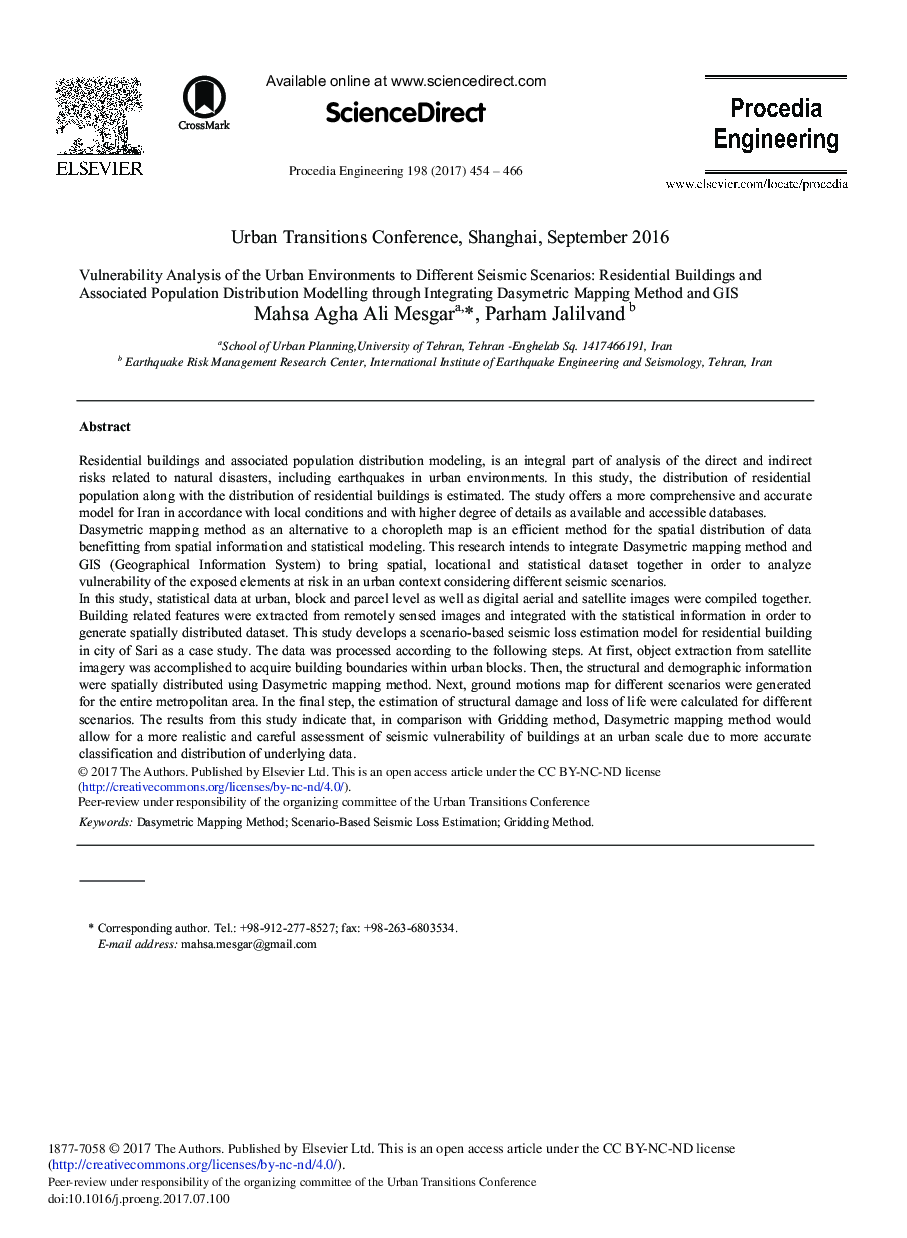| Article ID | Journal | Published Year | Pages | File Type |
|---|---|---|---|---|
| 5027410 | Procedia Engineering | 2017 | 13 Pages |
Abstract
In this study, statistical data at urban, block and parcel level as well as digital aerial and satellite images were compiled together. Building related features were extracted from remotely sensed images and integrated with the statistical information in order to generate spatially distributed dataset. This study develops a scenario-based seismic loss estimation model for residential building in city of Sari as a case study. The data was processed according to the following steps. At first, object extraction from satellite imagery was accomplished to acquire building boundaries within urban blocks. Then, the structural and demographic information were spatially distributed using Dasymetric mapping method. Next, ground motions map for different scenarios were generated for the entire metropolitan area. In the final step, the estimation of structural damage and loss of life were calculated for different scenarios. The results from this study indicate that, in comparison with Gridding method, Dasymetric mapping method would allow for a more realistic and careful assessment of seismic vulnerability of buildings at an urban scale due to more accurate classification and distribution of underlying data.
Related Topics
Physical Sciences and Engineering
Engineering
Engineering (General)
Authors
Mahsa Agha Ali Mesgar, Parham Jalilvand,
